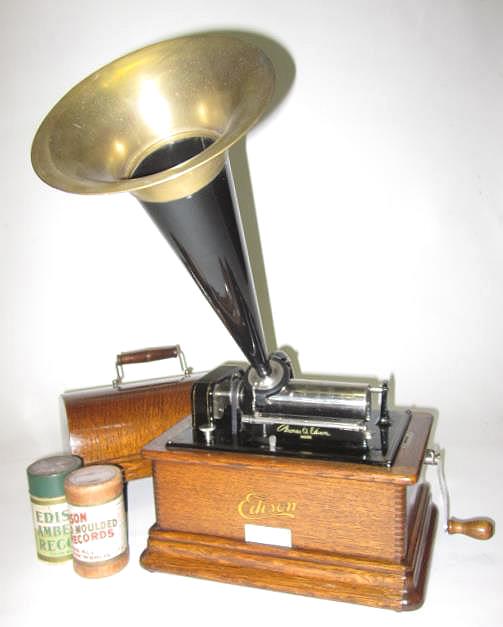Edison Standard Phonograph Serial Numbers
Posted : adminOn 2/12/2018EDISON STANDARD PHONOGRAPH THERE IS A SALE PENDING ON THIS ITEM EDISON STANDARD PHONOGRAPH As the second decade of the twentieth century began, the Edison company became ever more resourceful. As new models were released, remaining examples of the 'previous' model were often upgraded and incorporated into the current inventory.
Edison Standard Model A. Machine is very early based on the low serial number and pin striped bed plate. Of the line Edison horned phonograph of the. No Edison Antique phonographs from. Standard, Home, Fireside, Triumph. Edison has a model name & type as well as a serial number, making each phonograph.
Therefore, one may find a Model 'D' that has been upgraded to a Model 'E,' or a Model 'E' that has become a Model F. In these instances, the former Model designation was 'X'ed out on the ID plate, and the newer designation struck in to the right. What didn't really happen, however, was the process to be done IN REVERSE -- that is, a Model E becoming a Model D, but that's precisely what makes this particular Edison Standard so unusual. Here you may see the 'E' Xed out and the 'D' added next to it.
This was done at the Edison factory in NJ, but it was not a common state of affairs. In fact, it's incredibly rare. Here's the story behind this rarity -- The Edison company made a bit of a tactical error when it replaced the Model D Standard with the Model E. The Model D had the ability to play both the 2-minute and the 4-minute cylinder records.
This was an important feature to customers who had personal libraries which included both types of record. However, Edison planned on 'phasing out' the 2-minute record, so when the Model E was introduced in 1911, it was calibrated to play ONLY 4-minute cylinders. As events would show, Edison moved too fast to eliminate the 2-minute function -- clients were unhappy about the change, and Edison soon brought the 2-minute function BACK in the Model F Standard. However, before the Model F made its appearance, Edison had clients that wanted to buy a Phonograph that was 2-and-4 minute capable. This machine is an example of one such instrument.
A Model E was converted to a Model D. The client needed the 2-minute functionality because he was taking a home-study language course. Naturally, any 2 or 4-minute cylinder can be played on the machine, too. Customers who were also taking home-study courses got an optional 'repeater' added to the instrument. Nec Aspire Phone Template there.
You press the little 'finger cup' near the bottom right corner of the upper works and the last few grooves of the cylinder will play again. Wherever this instrument has been stored for the past 103 years, the conditions were optimum for preservation. It is NOT refinished, it is NOT repainted, it is NOT re-nickeled, but it is practically perfect. The original Edison decal, and, below, a celluloid plate promoting the correspondence school that supplied the language course.

